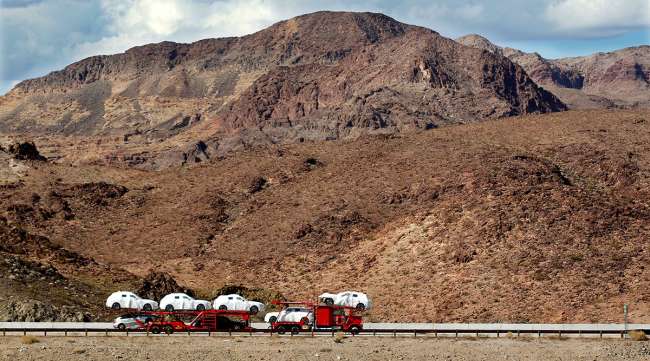Senior Reporter
Large-Truck Fatal Crashes up 3% in 2016, FMCSA Final Report Says

A new Federal Motor Carrier Safety Administration data drill-down report showed that the number of trucks involved in fatal crashes increased in 2016 by 3% from 2015, but said the “critical pre-crash event” for 73% of large trucks in fatal crashes was another vehicle, person, animal or object in the truck’s lane or encroaching into it.
FMCSA’s 2016 Large Truck and Bus Crash Facts, released this month, is the agency’s most recent and detailed crash analysis. To ensure greater accuracy, the agency waited a year to fashion the report after the annual preliminary numbers were first made public.
The number of large trucks involved in fatal crashes increased from 4,074 in 2015 to 4,213 in 2016. However, the large-truck involvement rate — large trucks involved in fatal crashes per 100 million miles traveled by large trucks — remained constant at 1.46, according to the report.
The number of fatalities caused by large-truck accidents in 2016 totaled 4,317, compared with 4,094 the prior year. Of that number, there were 722 large-truck occupant fatalities in 2016, up from 665 in 2015.
Large Truck and Bus Crash Facts 2016 by Transport Topics on Scribd
In a statement, American Trucking Associations said the long-term trend over the past two decades is “positive and due in no small part to the efforts of the American trucking industry.”
“We’re working to fully understand how the Department of Transportation is now calculating various safety metrics, particularly as they relate to vehicle miles traveled,” the statement said. “The changes they have made to how these figures are tabulated make it very difficult to make year-over-year comparisons.”
The FMCSA report said that fatal crashes involving large trucks tended to occur in rural areas and on interstate highways. “Approximately 61% of all fatal crashes involving large trucks occurred in rural areas, 27% occurred on interstate highways, and 15% fell into both categories by occurring on rural interstate highways,” the report said.
The federal agency categorizes large trucks as those with a gross vehicle weight rating of greater than 10,000 pounds. The number of large trucks registered rose from 11.2 million in 2015 to 11.5 million in 2016.
In addition, there were 104,000 crashes involving large trucks that resulted in 145,000 injuries in 2016, a significant increase over 2015. In 2015, there were 83,000 injury crashes involving trucks, resulting in 116,000 injuries.
The report showed that more than one of every three truck-involved crashes and nearly one of every four injury crashes occurred at night, between 6 p.m. and 6 a.m. The overwhelming majority of both fatal and nonfatal crashes occurred on weekdays, according to the report.
In sheer numbers, there were far more crashes — fatal and injury-related — in passenger vehicles than trucks.
There were 29,813 fatal crashes involving 40,908 passenger vehicles in 2016, resulting in 32,702 fatalities. Also, among passenger cars there were more than 2.1 million nonfatal crashes resulting in more than 3 million injuries.
Roughly 3% of the 4,152 truck drivers involved in fatal crashes had a blood alcohol content between 0.01% and 0.08%; 2% had a blood alcohol content of greater than 0.08%. By comparison, more than 20% of passenger car drivers involved in fatal crashes had a BAC greater than 0.08%.
The report offered much more statistical information, including:
• About 27% of work zone fatal crashes and 8% of 2016 work zone injury crashes involved at least one large truck.
• There was a 34% decrease in the number of fatal crashes involving large trucks or buses between 2005 and 2009, but an increase of 28% between 2009 and 2016. The number of fatal crashes involving large trucks or buses increased by 6% from 2015 to 2016.
• 4% of the large trucks involved in fatal crashes were hauling hazardous materials, while only 2% of trucks hauling hazmat were involved in nonfatal crashes.
• Truck tractors pulling a single semi-trailer accounted for 62% of the large trucks involved in fatal crashes in 2016. Tractors pulling doubles made up 3% of the large trucks involved in fatal crashes, while tractors pulling three trailers accounted for less than 0.1% of all large trucks involved in fatal crashes.
• In 2016, 13%, or 662, large-truck occupants in fatal crashes were not wearing a safety belt; a total of 285, or 43%, of those not wearing seat belts were killed in the crash.
• In 2016, “speeding of any kind” was the most frequent driver-related factor in fatal crashes for drivers of both large trucks and cars and “distraction/inattention” was the second most common for large-truck drivers.




